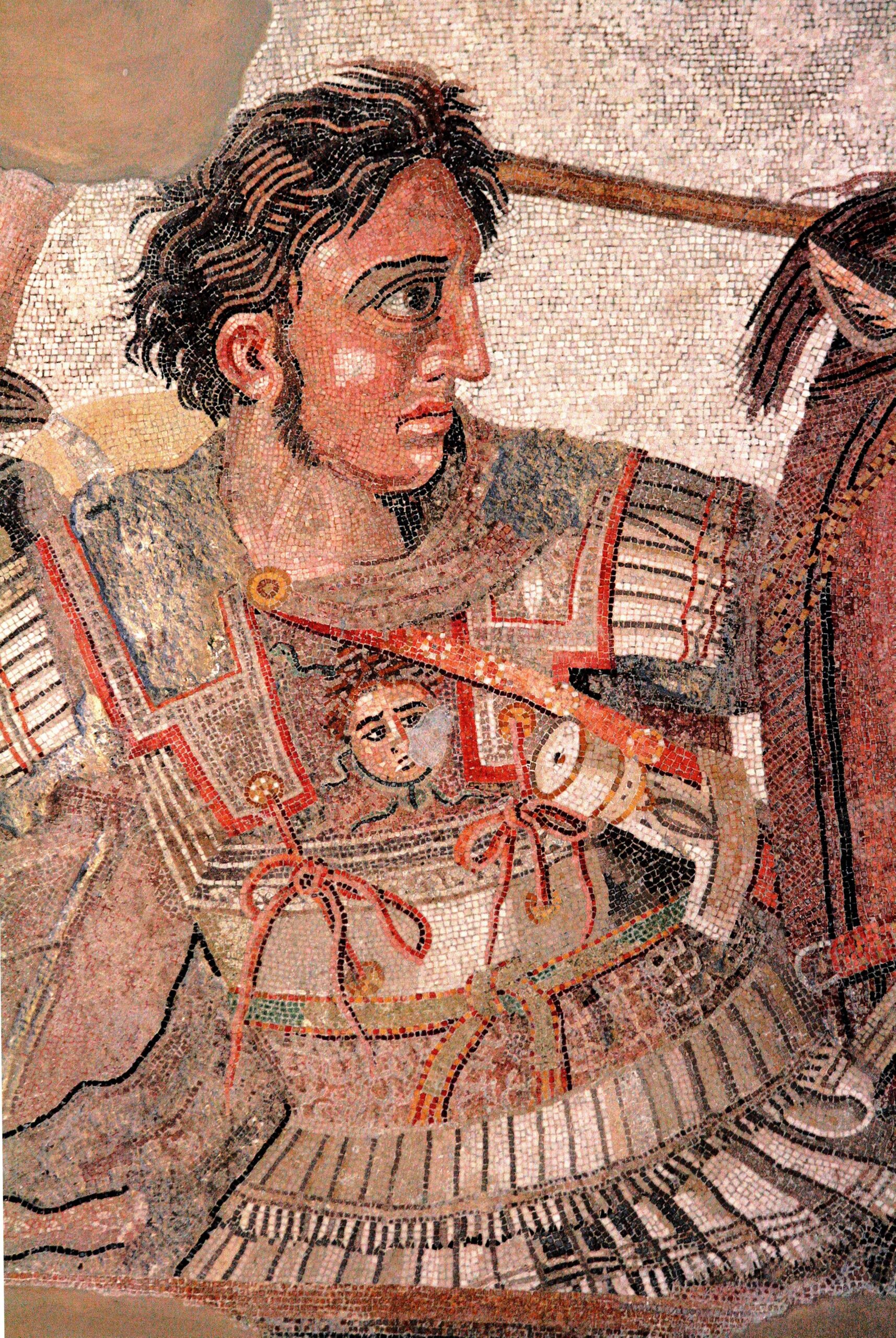

Fragment from the "Alexander Mosaic" showing Alexander the Great in battle against Persian King Darius III. Alexander shown on horseback in full armour. A Roman copy of a Hellenistic painting. Original circa 310 BC, Copy circa 1st-3rd century AD. (Photo by: Universal History Archive/Universal Images Group via Getty Images)
Published in the Journal of Field Archaeology, the discovery involves a piece of purple fabric found in a royal tomb in Vergina, located in Macedonia, northern Greece. The fabric was uncovered in the golden ossuary of Tomb II, accompanied by the remains of a man and a gold wreath.
The fabric, identified as a sarapis—a type of woven purple robe traditionally worn by Persian kings and later adopted by Alexander—underwent thorough analysis. It was revealed to be crafted from cotton, which was highly uncommon for that era, and dyed in royal purple. Researchers also detected the presence of chondrite, a lustrous white mineral typical in ancient Persian textiles, within the fabric.
These findings imply that the fabric was part of a royal garment with eastern influences, potentially acquired by Alexander. This discovery is poised to alter the interpretation of the tomb’s contents, suggesting that several items may have belonged to Alexander himself rather than his father, King Philip II of Macedon.
LP 8.1 was first detected in July 2024 and is now the third most prevalent…
Apple Watch cellular plans have launched in Greece, with Cosmote offering eSIM activation for the…
The Archbishop of Cyprus, Georgios, lambasted Cypriot MEP Feidias Panayiotou, accusing him of acting as…
Peter Mamouzelos, South Sydney Rabbitohs hooker, shares his dream of playing rugby league in Greece,…
Cyprus remains divided since Turkey’s 1974 invasion, and while recent UN-hosted talks between Greek and…
The potential revival of the EastMed pipeline under Donald Trump’s leadership signals a renewed push…